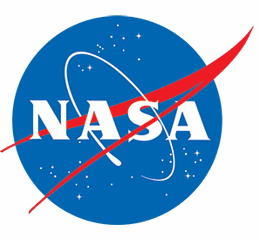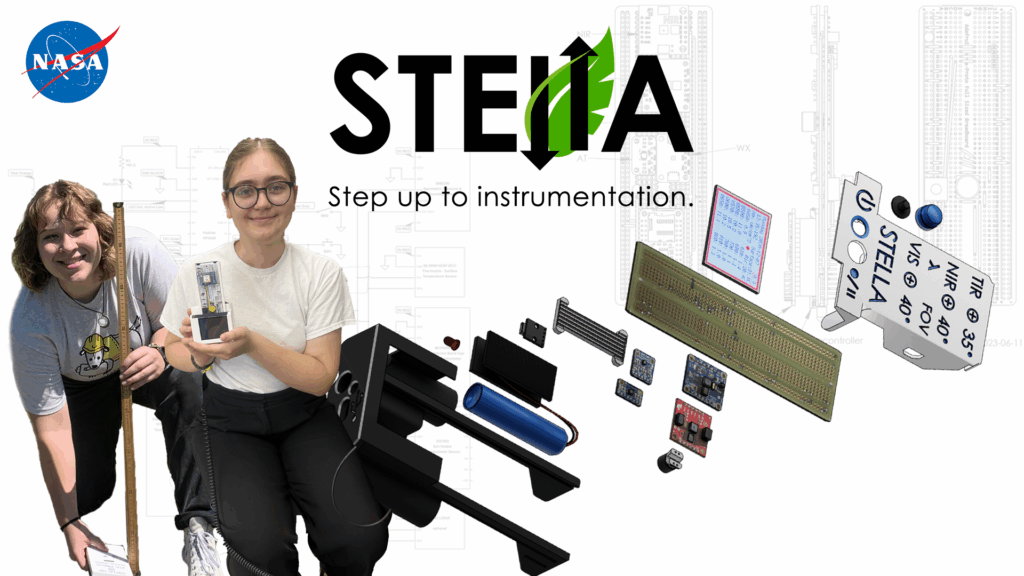Bringing NASA Technology to the Classroom: One Educator's Mission to Transform STEM Learning
Video Summary
An innovative teacher is using NASA’s STELLA instrument to bridge the gap between space technology and K-12 education, creating hands-on learning experiences that prepare students for tomorrow’s workforce.
The Foundation – TPACK Framework in Action
Lynn Nichols draws from her dissertation research on makerspaces to explain how NASA’s STELLA technology fits into proven educational frameworks. Using the TPACK model (Technology, Pedagogy, and Content Knowledge), she emphasizes that teachers need hands-on experience with STELLA before successfully incorporating it into their classrooms. This approach ensures that technology integration enhances rather than disrupts effective teaching practices.
Real-World Science in the Classroom
Students using STELLA engage in authentic scientific research that mirrors professional environmental work. Through spectral analysis and NDVI (Normalized Difference Vegetation Index) measurements, they can instantly determine plant health and distinguish between vegetation and non-vegetation surfaces. This immediate feedback creates engaging learning experiences while building technical competencies in remote sensing and data analysis.
From Local to Global – Connecting Classroom Data to Satellite Observations
The STELLA program creates powerful learning connections by combining hands-on measurements with Landsat satellite data. Students study real environmental challenges, such as comparing urban heat island effects between Providence and Buffalo, or measuring chlorophyll levels in the Chesapeake Bay. This approach helps students understand how local observations connect to broader environmental patterns.
“I think the connections between their community and everything that Landsat is doing, I think are really powerful and an important takeaway. You know, so much of what we’re able to do here, at ground level is because of advancements that NASA has made and then, you know, shared with the country and the world.”
Innovation and Problem-Solving
Nichols envisions students using STELLA for community-focused projects that develop both technical skills and civic engagement. From building and monitoring water irrigation systems to improving school air quality, students identify local problems and use STELLA to evaluate their solutions. Advanced applications include attaching STELLA sensors to robots for environmental monitoring, creating direct connections to NASA’s Mars rover missions.
Workforce Development Impact
This educational approach directly addresses the growing need for skilled professionals in environmental science, precision agriculture, and geospatial technology. Students develop job-ready skills in data collection, analysis, and scientific methodology while working with the same tools used by NASA professionals and industry leaders. The result is a pipeline of STEM-literate graduates prepared for high-demand careers in emerging technology sectors.
Transcript
Lynn Nichols: So incorporating STELLA into the classroom, I think follows just general good pedagogy in general. Sort of. Sorry. Let me think about this for a second. So incorporating STELLA into the classroom uses regular classroom pedagogy, I think.
Lynn Nichols: So it ties into my research. I do, as part of my dissertation work, I’m looking at, how makerspaces tie in with our traditional sort of understanding of te pack, which is technology pedagogy and content knowledge. It’s a framework, a theoretical framework created by Mishra and Kolar. And it talks about how essentially, in order to incorporate technology effectively into teaching, teachers need to have an individual full technological knowledge of whatever they’re working with and individual content, knowledge of their content area and, and pedagogical knowledge.
Lynn Nichols: But in addition to those three separate buckets, they also need a combined bucket of how all of those interact. And, so my work sort of extends that to makerspaces. And knowledge of broadening access to Stem. And so my sort of thought is that they need those that sort of try combined knowledge, but they also need knowledge of how to get students into Stem.
Lynn Nichols: And they also have it all situated sort of in makerspace contexts. So teachers using these makerspace technologies in an effective way to sort of do all of the above. And I think that the STELLA and incorporating the STELLA into the classroom very much follows, those sort of frameworks that, that I just mentioned. It is something that to get teachers to use it, they really need an opportunity to play with it and think about how they would design for their own classrooms using using STELLA’s.
Lynn Nichols: They also, you can do this through design challenges without me. Sharon Kolar originally sort of, created this. They gave teachers challenges to incorporate a technology into their pedagogy. And through that challenge, teachers really started to to build that t pack that combined knowledge. And I think, by working with you sort of in thinking about how I could incorporate STELLA into my classes, into my robotics classes, into the National Science Foundation, Noyce grant teacher work.
Lynn Nichols: That sort of served as the challenge to figure out how the STELLA would sort of naturally enhance the content, how I would structure my classes to bring it in and how I could, you know, sort of fit it into my traditional sort of pedagogical approach to teaching and learning.
Mike Taylor: So can you walk me through some, say, STELLA activities that you’ve developed for your study?
Lynn Nichols: Yeah, absolutely. Can you give me one second? I’m just going to open them up so that I can talk more. I can give you the specifics of everything that that we’ve done. So the first thing that we talked about with, STELLA was how it interacts with plants. And so we. And you also were part of this, talked about how when, light from the sun is interacting with a plant leaf, it is, producing and reflecting, near infrared wavelengths. It’s also, you know, we’re seeing that sort of, reflecting of the green, sort of wavelengths, too.
Lynn Nichols: But that near infrared pieces is what I think is really interesting. And so in doing, in developing these activities, I was doing some research and stumbled across a, it was a, an apple tree study where they were looking at blight with an apple tree, and they saw that there was a very, significant and pretty immediate dip in the near infrared, compared with the green sort of wavelengths.
Lynn Nichols: I think it took I’m looking at the data correctly. It took like about seven days to see a dip, sort of in the, in the green. But it was, I think, day. Gosh, what was that? They were starting to see sort of weird things happening with the near infrared after day one. Which was really interesting.
Lynn Nichols: So that was sort of my first thought was, how can we bring those connections in? And so from there, I really, you know, it’s sort of a back and forth between, hearing from you about what STELLA can do and then also doing research into how STELLA can reinforce content and reinforce, sort of important sort of takeaways that we want students to have.
Lynn Nichols: So the activities that we developed and I’m still opening them up, I build slideshow and slideshow on slideshow. So the first activity was, an activity on monitoring vegetation health. And so we know that, access to nutritious food, you know, impacts your ability to grow, but it also impacts your brain development. And we know that access to nutritious food early on can really make a difference in terms of IQ and sort of long term health.
Lynn Nichols: And so if you don’t have enough food in the first thousand days of your life, your brain may never reach its full potential is, sort of a takeaway from one of the podcasts that we listened to. We also know that, in farming, it’s something like 70% of water, is used by farming. And of that 70%, 40% is lost to the environment due to poor irrigation.
Lynn Nichols: And so if we can, better sort of target what needs water when we can help reduce that sort of loss of water. Let’s see. And so the we used STELLA to collect data on, plants, and we looked at reflectance, irradiance and ndVi data to determine the health of the plant. And then sort of discussed that, with our groups, and that was a nice introductory kind of activity to how to use the STELLA and the data viewer and all of those pieces in order to, introduce teachers and students to the functionality of STELLA, while also, sort of reinforcing some sort of biology content with that.
Lynn Nichols: We also there was also some additional readings on using Landsat to measure Chlorophyl in the Chesapeake Bay and then, chlorophyl and sea surface temperature. That was, interesting. We also talked about urban heat islands. And so, we know that I’m going back to my stats, so the Landsat seven satellite helps to determine the impact of, lack of trees on a region.
Lynn Nichols: So there was a comparison done between Providence, Rhode Island and Buffalo, New York. And, there are similar latitudes. Providence is 83% densely developed in terms of urban development. And Buffalo, I think is 43% densely developed. Providence had temperatures that were nearly 20 to 22 degrees warmer, than the surrounding towns, whereas Buffalo was only 13 degrees warmer than the surrounding towns.
Lynn Nichols: So we were really like looking at that urban heat island effect, with that sort of Landsat study. And to, sort of use STELLA to hammer these points home. We talked about how we used a heat lamp and compared, the temperature of a surface, that had some foliage blocking it in comparison, without foliage blocking it, and looked at the sort of temperature comparisons.
Lynn Nichols: We also looked at green spaces and downtown Baltimore. So there’s a study and it indicates that, an increase in tree density of one standard deviation for, a region can be associated with a 24% lower prevalence of asthma in that region. And so we talked about how, you know, STELLA could be used to monitor temperatures in cities, based on, sort of increased green spaces and where we could add green spaces into our cities in order to, to reduce asthma and, and reduce those heat island kind of effects, because asthma is sort of associated with some of those heat island pieces.
Lynn Nichols: And then the last activity, we looked at air quality. And so this was related to that, the Landsat piece, the Landsat eight Operational Land Imager, that collected this green vigor, collected it was used to predict the concentration of particulate matter less than ten micrometers in Delhi, India. And so great, we know that pollution and air quality are well-documented issues in India.
Lynn Nichols: And atmospheric visible spectrum reflectance data collected from Landsat 8 passes was reviewed and compared with data from the Central Pollution Control Board for corresponding dates. And that was a study from 2017. And so for that activity, we looked at how, STELLA, air quality pieces could be used to look at air quality in classrooms and help sort of benefit that.
Lynn Nichols: And so these were all designed as sort of introductory activities with STELLA. They all use graphs. And so looking at the data, graphing the data, from the spectrometer, some of it is, you know, just very clearly, you know, following a trend that students can make predictions on other pieces are just really helpful for them for making long term sort of judgment calls, the NDVI value, for example, is something that, you know, students can get an immediate sort of snapshot of how a plant is doing or if they’re even looking at a plant or if they’re looking at something else, like cement.
Lynn Nichols: And so I think that in terms of developing the activities, it’s a really cyclical process. Looking at previous Landsat data, looking at how STELLA works, looking at content and how those pieces can be combined and sort of a more authentic way that can help students engage with STELLA and engage with Stem in their community.
Lynn Nichols: So, I mean, off the top of my head, I could see students building a water irrigation system and still being used to monitor which, system is sort of working best for the plants based on, how how happy those plants are from an ndVi standpoint. I could also, you know, see something similar, for air quality for students, you know, using something like moss to, try to improve air quality and improve, you know, something, within their, their classrooms and within their schools and use, STELLA to, to monitor that.
Lynn Nichols: I could see yeah. It just essentially having students identify problems within their community and then use it to help evaluate the efficacy of their planned intervention to address that problem. And I could also see, students using STELLA in conjunction with, you know, sort of other, digital fabrication kinds of pieces, you know, like attaching a STELLA to a robot and using, you know, designing a robot that would be able to go into, sort of more extreme environments and then use the STELLA to take readings, that kind of a thing and that, you know, sort of, mimics what we’re doing with, Mars rovers, which is a really cool, I think, connection for students to see.
Mike Taylor: what do you hope teachers take away from using STELLA in their classrooms?
Lynn Nichols: I think the connections between the, their, their community and everything that Landsat is doing, I think are really powerful and an important takeaway. You know, so much of what we’re able to do here, at ground level is because of advancements that NASA has made and then, you know, shared with with the country in the world.
Lynn Nichols: I think that’s a really important takeaway is, is that our space program is so important. And really benefiting all of us in ways that we don’t immediately realize and understand. I know I’ve learned a lot about Landsat and how it benefits me and my community. And, my family through, the work that we’ve done together, which I think is really important.
Lynn Nichols: I also think, anytime we can get teachers to see that incorporating as sort of like handheld, spectrometers and microcontrollers and Arduino into their teaching, in an organic and sort of meaningful way, just reiterates how accessible these tools are. I know a lot of teachers fear when they don’t immediately know everything about what they’re incorporating. And I think that while, you know, that can be really scary, I think it’s also just so important that teachers are trying new things and taking this sort of, risk with this accessible technology.
Lynn Nichols: It’s not really a risk, right? Taking, you know, a chance on this accessible technology in their classroom, I think is, an important takeaway, that it’s it’s something that’s easy to do and, and can really impact learning in a meaningful way. I think that, showing students that they can be citizen scientists, and use, use these tools in order to impact their communities is really important.
Lynn Nichols: And, good takeaway for teachers. And I think that, just reminding teachers that 3D printing can be used to create these really useful tools, for their classroom and community. Are is also really important.
Mike Taylor: putting you on the spot here because of course, I’ll be listening. So what has it been like working directly with NASA scientists on an educational research? What has it been like working directly with, with NASA folks on, on STELLA’s? I guess we can rephrase it that way or whatever.
Lynn Nichols: It’s been a lot of fun. I really love talking with you, Mike. I love talking with Elana I’ve loved talking with Matt Pearce. And really, everybody that I’ve chatted with has been so interesting to, to talk to and to learn about what they’re doing with NASA. I have been just so appreciative of the time that you’ve you’ve just given so freely to help our, teacher fellows at Towson, learn about Landsat, learn about STELLA.
Lynn Nichols: And I really appreciate you giving up, you know, some of your weekend time to, to help us really, learn more about everything that is happening with NASA. I feel like everyone has been so kind and, so accessible and really helped us. And our students learn whenever we ask, which I appreciate, because I know I ask a lot.
Lynn Nichols: I, I appreciated you coming, on zoom to speak with my students about everything with NASA and, Landsat and GIS. So thank you so much for that. It’s been really wonderful to work with everyone.




